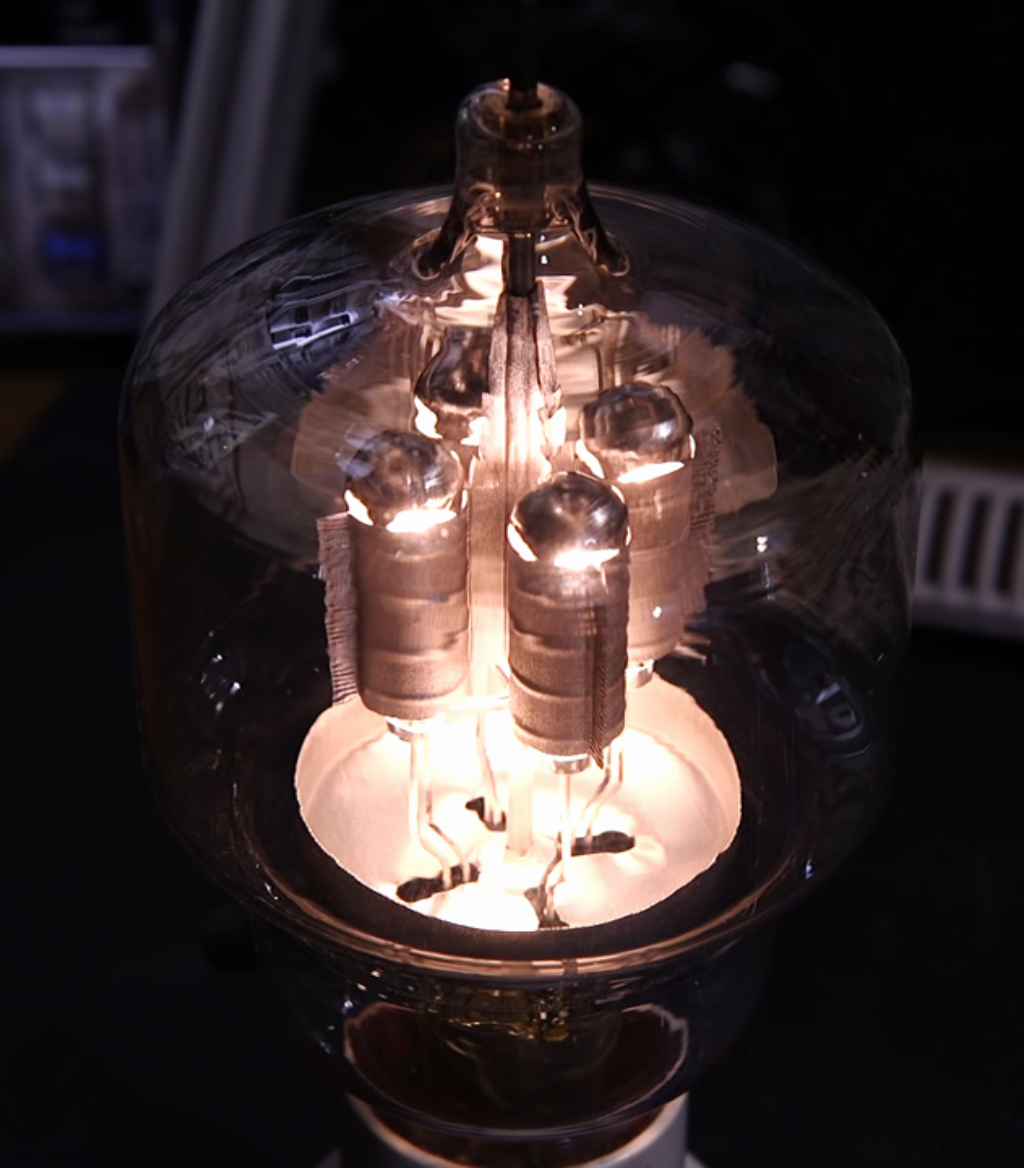Thermionic Valve - Home - electronics

In the book "Contact" by the late Carl Sagan (also made into a movie of the same name), a young Ellie Arroway tries to fix an old valve radio. She notices that one of the valves doesn't glow when the radio is switched on, so she unplugs the radio, straightens a bent pin on the offending valve and re-inserts it back into its socket. When she turns the radio back on the radio works. This experience gets her thinking about how radios and valves work.
Valves (Thermionic Valves or Vacuum tubes) were in common use in the 1900s and were mainly used as diodes or amplifiers in electronic circuits until they were replaced with semiconductors like transistors and integrated circuits starting at about the 1970s. The original vales looked much like incandescent light bulbs, which is hardly surprising because it's how they were discovered.
The Fleming's vacuum tube was based on an effect that Thomas Edison had first discovered in the 1880s, but didn't put to useful work at the time. One of Edison's inventors William Joseph Hammer, while working in Edison's laboratory, added another electrode to a heated filament light bulb and realised that it could function as a rectifier, a device that passes an electric current in one direction but not the other. This would enable the conversion of AC (Alternating Current) to DC (Direct Current).
In 1880 ~ 1881, William Joseph Hammer (1858-1934), in charge of testing early light globes, noticed a blue glow around the positive pole in a vacuum tube and a blackening of the bulb at the negative pole. This unknown phenomenon was first called "Hammer's Phantom Shadow," but when Edison patented the bulb in 1883 it became known as the "Edison Effect."
He was chief engineer when the English Edison Electric Light company built a central station in London to power 3,000 incandescent lamps on the Holborn Viaduct
The Fleming's vacuum tube essentially consisted of an incandescent light bulb with an extra electrode inside. When the bulb's filament is heated white-hot, electrons are boiled off its surface and into the vacuum inside the bulb. If the extra electrode (AKA "plate" or "anode") is made more positive than the hot filament, a current flows through the vacuum.
This video explains how valves / vacuum tubes work in more detail
Further reading / resources :-
- Many believe that valves produce a superior quality of sound, but unfortunately valve equipment breaks down, so a few companies have formed to Repair Valve Equipment
- History of Vacuum Tube / Thermionic Valve The history of the vacuum tube or thermionic valve from the first observations of the Edison Effect through early developments such as Fleming's Oscillation Valve and de Forest's Audion.
- Fleming oscillation valve The Fleming valve, also called the Fleming oscillation valve, was a thermionic valve or vacuum tube invented in 1904 by Englishman John Ambrose Fleming as a detector for early radio receivers used in electromagnetic wireless telegraphy. It was the first practical vacuum tube and the first thermionic diode, a vacuum tube whose purpose is to conduct current in one direction and block current flowing in the opposite direction.
- The First Vacuum Tube Sir John Ambrose Fleming (1849–1945) was an English electrical engineer and physicist, known primarily for inventing in 1904 the first vacuum tube. It was also called a thermionic valve, vacuum diode, kenotron, thermionic tube, or Fleming valve. Fleming made numerous contributions not only to electronics, but also to photometry, electric measurements and wireless telegraphy.
(C) 2020 SI7